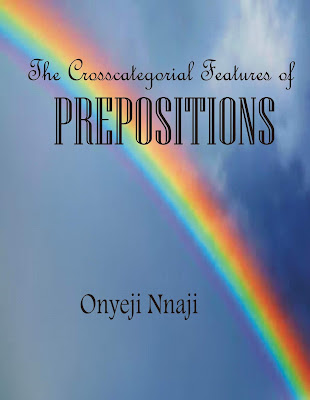THE LOST CITY OF THE SUN by Onyeji Nnaji
“In a single day and night of misfortune, the Ireland of Atlantis
disappeared into the Atlantic and was seen no more” (Plato 365 BC).
Legends wrote about the lost city and
the disappearance of the first ever civilization the world had before the
flood. This civilization overtook the entire glob, and was the first in the
human history. Sumerian tablets maintain that the civilization had its take off
point at the city of Eridu. Invariably, the theosophical
structure was headed and overseen by Eri and Idu; these are the overhead
figures whose names gave birth to the coinage that stood for the civilization; Eridu.
The Theosophism comprised the following:
(i)
Eri (the theosophist).
(ii)
Idu (the custodian of nature and law: a god-man from Umudiala; the kingmakers).
(iii)
Dioka (a technocrat, artist, engraver and scribe from Awka).
(iv)
Eze-Adama (the figure that stood for the created man).
The renowned anthropologist who carried
out a research on the ancient Nri kingdom, Northrop, related that there was a
figure which stood for Adama in the court of Eze Nri. Plato and other legends lamented that the
civilization was lost to the Atlantic Ocean. The beauty of this research work
and its contribution towards the recovery of the culture of the lost
civilization lied on the revelation which the reserved arts of this ancient
civilization could bring to minds. This, of course, remains one of the
unquantifiable contributions of Dioka, the body that bore art and literature as
a part of the then society superstructure. These arts were found in the present
day Igbo Ukwu land. One of these most survived of Dioka arts is the earth pot
which revealed the shape of the world before scientific predictions.
The view revealed via the earth pot is
the fact that creation was sourced outside the earth. That is why the pot can
be viewed from the outside, not the inside. It inferred another eternal imagery
to the occasion that began creation. The Igbo spoke of creation as beginning
from the anthill. To show this, the pot had to be neatly and carefully placed
on a mound. Egypt and Israel hold to this same view in her mythology. They
believed that God started the work of creation with a raised earth or mound. On
this mound, God stood while He embarked on the business of creation. Israel
celebrates this idea by raising mounds. We found on the pot an opening at the
top, signifying the position of the connection between the earth and the sun.
Igbo astronomical scientists maintained that there is a rope let down everyday
which connects the earth to the solar man. See detailed explanation of this idea
in the Aspects of the Ancient African
Metaphysics: Cosmic Chain.
The
connection between the Igbo, Egypt and Israel in the manner revealed above
clearly shows that they have a same source of history. It further highlights
the lamentation of Ottenbergthat,
considering the size and importance of the Igbo, very little
research and publication has been undertaken on them, not only in history but
in anthropology and other fields, compared to, say, the Yoruba or Ashanti (p. 120).
It
also appears that even when tentative attempts were made in the past to study
the hegemonies of Igbo culture and historical origin, the resulting works were
either tainted with typical western epistemic notions or straddled with betraying
the usual lack of the depth that characterizes ungrounded ethnographic
accounts. As
a result, we have incomplete history to present to the future generation.
Eridu art was further revealed in her
system of writing. Ancient Igbo scholars hold to the view that the first form
of writing was “Akala”, marks. Akala appeared in two main forms before the more
complex ones. Simple Akala appeared as vertical lines and other in horizontal
lines. They were written on ancient walls and rocks using various art colours
as Ufie, Nzu, Odo,Uli and other art
colours. Sometimes Akala is calved carefully on rocks. This is done mainly when
it is used to keep official documents. Each line stroked on the wall or stone
stood for a significant meaning. To some ancient scribes, the art colours were
used for different forms of writing. In some cases, Akala were engraved on
walls and rocks. Complex Akala hold different metaphysical values and informed
the expedience of Igbo geometrical shapes. The scribes of the ancient Eridu had
shapes like triangle, quadrangle and others as parts of their writing. The
different forms of Akala that survived to the present day are shown below.
Round about the earth pot shown in the
previous page are seen different forms of Akala, both complex and simple ones
as explained above. The pot shows another form designed in corrugated style to
reflect the brilliance of serpents. The house above shows more other complex
forms of the ancient writing marks. The walls were designed with art colours
and Uli. Clear enough, Uli is seen on the body and face of the girls above. It
was instrumental to several artistic forms in the ancient time. Practical
enough, it was the first form of body tattoo used in the ancient time before
the invention of permanent tattoo. As instrument for temporary tattoo, Uli does
not last more than three weeks.
Akala became more interesting in the
decay part of Eridu when it became picturesque. The development of picturesque
Akala led to a change of the form of writing to the later system known as Nsibidi. Nsibidi remains the surviving
legacy of Eridu civilization till the era of the colonial masters in Igbo land.
Some of its pattern was borrowed to form cuneiform by the survivors of the Noah
flood.
The shock expressed by Gregory, when he
witnessed a court procession in the Igbo land with the court secretary
documenting the proceedings, was a clear indication that he never believed
inner Africa had a system of writing different from the hieroglyphics of the
Egyptian civilization. Of course, in the book, Before the Pyramids, it was clear that the hieroglyphics which was
the writing style of the ancient Egyptian civilization was derived from a
system of writing which the civilizers brought with them. The system of
writing, as the book could explain, was dully picturesque. “It should be older
than Hieroglyphics”. The same writing was used to describe the origin of the
first pyramid in Egypt (stepped pyramid in Saqqara), see pages 101-102 of the
text mentioned above.
It requires a prim mind to understand
Plato’s Timaeus and clearly identify
the setting of Atlantis’ saga as cited in the beginning of this phase. It is
for this reason that Sergio, in Legends
of Atlantis, remarked that Plato, “in the
Timeaus,” had written to show “how little he truly knew, not only of the
history of his own people, but of the history of Egypt, and of the world.”
Plato’s confusion started from his involvement with the unnamed Egyptian priest
whom Solon visited to learn Greek history. Again is the idea of Solon
travelling to another country in order to be acquainted with the history of his
own country. Of course, if the priest should have a better history of the
Atlantians, then it is apparent that the history concerning the Lost City of
the Sun was not part of the Greek history. Greece, of course, may be considered
as remnants of the Atlantians because they descended from the generation of men
that survived the flood in the Noah’s ark. Turning back to history, the matter
became clearer as we can read in the succeeding paragraphs.
Plato's
Timaeus relates the true story of how one Solon(638-559 BC), a famous “Athenian
traveler, poet, and lawgiver”, in the district of Sais, near the Nile Delta in Lower
Egypt. He had gone there as a cultural ambassador to converse with the leaders
of the Egyptians about Greek history and culture, seeking to impress them with
the accomplishments of the Greeks, as well as to gain similar knowledge from
them about the history of Egypt, and of the world. One of the only two known
dialogues of Plato that mention Atlantis is Timeaus
and Criteas, these works comprise the only records of Atlantis handed
down from antiquity. In his ensuring speech on Atlantis and ancient Athens, the
priest was to rebuke Solon, and all of the Greeks, for having forgotten their
own history, particularly the epic story of how valiant Athens had once
defeated mighty Atlantis in ancient times and saved the world from slavery.
To the
Egyptians, the Greeks were relative newcomers to the world stage, Greece in any
form having been in existence for only a few centuries by the time Solon
visited Egypt (around 600 BC). Moreover, the Greek confederation was fairly
unstable and subject to sudden change, a situation not conducive to the growth
of such luxuries as philosophy and learning. Egypt, on the other hand, had by
that time been in existence as a coherent political entity for roughly 2,500
years as reckoned from the uniting of Upper and Lower Egypt by Narmer, more
commonly known as “King Scorpion,” and had only experienced three significant
political upheavals during that whole time. The time includes:
- The Old Kingdom(2700-2200 BC),
- The Middle Kingdom(2050-1786 BC), and
- The New Kingdom(1560-1087 BC).
Now, it is apparent from the visit of
Solon to Egypt that even the Greek has a little information about this aspect of the global history. To be cleared, the Greek had to depend on the Egyptian priests. As was
noted above, Greece was among the survivors of the great Atlantis because they
belong to the bloodline of those who survived the Noah flood in the ark. It is
even clearer from the analysis of Plato’s Timaeus
that the city of Atlantis was inhabited by the gods and headed by one of the
gods who served as their king.
And the god himself greatly beautified the island he had
created in the middle to make it a dwelling suitable for a god. Because he was
a god, he did this with little effort. He drew up two subterranean streams into
springs. One gushed out in a warm fountain and the other in a cold fountain.
And from the earth he produced all varieties of crops that were sufficient to
his island (Plato Complete Work 1330).
Again,
there is no aspect of the Greek history that insists that Athens had a deluge
that destroyed the brave spatters civilization of the Greece Empire. The world
all over, recorded one and only deluge which was at the time of Noah. And every
history book that discussed issues connected to the deluge had always stated
categorically that the human population were concentrated in the east (the
place of the rising sun). Or was Plato suggesting that Greek civilization
exceeded the Babylonia civilization? Such information is completely contrary to
every historical claim. Such claim and many others compelled George G. M.
James, to entitle his book, Stolen Legacy, for he argued that the Greek Philosophy was
the stolen Egyptian Philosophy. Sergio supported this view in the
following statement:
However, it was one deluge in particular that was an
integral part of the story that was about to unfold, a destruction by water
that was awesome in its scope and effect upon the ancient world. The story of
the Great Flood, as it is commonly called, has been found in the literature of
almost every major cultural tradition, and most minor ones. In the Bible, the
Great Flood was said to have destroyed all land-based life on earth, save Noah
and his family, and the animals that were saved on the ark. The story of the
Great Flood is not just from the Bible. Variations of that ancient tradition
can be found on every continent in one form or another. It was this Great Flood, which the priest referred to as “the great
deluge”, (Legend 2-3).
The Lost
City of the Sun remains one of the viable proofs Africa has to truly speak of
their relationship. This is because, various civilization in Africa of the post
deluge adopted different names for one and the same ancient civilization that
was lost to the dust of time. Sharing in this consanguinity are the Benin,
Yoruba and Egypt. The respective ancient cities refer to the lost city as Uhe, Ife and Heliopolis. Each addressed the city as the city of light. The name Eridu was given to the city by the
survivors of the Noah flood. By this they did not address the city by its name
rather the personalities who shouldered the responsibility of the Theosophism.
We have
taken time to examine the situation of the flood and the causes of the
destruction of the world of old in the succeeding sub-title in the later part
of this chapter.










.jpeg)
Comments
Post a Comment